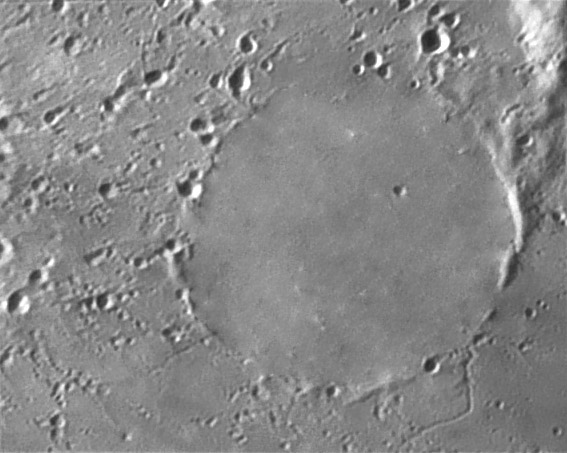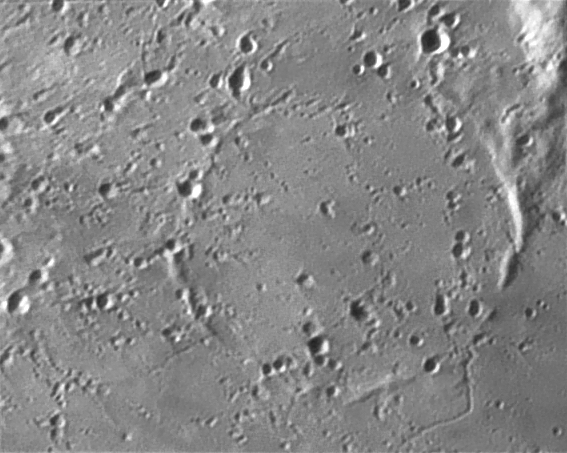
before image by François Emond, Hautes-Alpes, FRANCE.
Stadius should never have been named. There is hardly anything there but a hint of a past presence. Stadius formed on an earlier, lower surface and was later covered by lavas from Sinus Aestuum and/or Mare Insularum. Although only a few discontinuous pieces of its rim remain - the lavas really filled it to the brim - it is slightly larger than nearby Eratosthenes and originally must have looked similar, with a depth of 3 to 4 km. Now all of that hole is filled with lava. The area around Stadius was pounded by ejecta from the formation of Copernicus, and that association with the many little craterpits - which earlier selenographers didn’t seem to realize were from Copernicus - may have helped attract attention and ultimately a name. Indeed, Neison, Elger and Goodacre all commented on the pits, but never mentioned that they are related to Copernicus. The idea that these classic observers seemed to be struggling with was finally annuciated by Gilbert Fielder in his 1963 book, Lunar Geology. Fielder suggested that Stadius and other low rimmed features such as Wallace and Egede were really the youngest volcanic structures whose growth had not yet reached the great size of Copernicus and other older craters. Fielder recognized that the craterpits in radial lines from Copernicus were ejecta from that (volcanic) cone, but those in Stadius were volcanic pits themselves. Fielder, my friend, was wrong. I have swept away all the pits within Stadius to see how that part looked before Copernicus’ impact origin blasted the debris out that excavated the pits. That current view is at the bottom of the page.
Technical Details:
08/06/07; 03h45 UT, in Chorges (Hautes-Alpes, FRANCE). Dobsonian 16″ + FFC Barlow lens + webcam Vesta Pro (B & W, raw mode) + red filter.
Related Links:
Rükl plate 32
François’ website
Yesterday's LPOD: Better the Second Time Around
Tomorrow's LPOD: The Aroma of Images
COMMENTS?
Register, Log in, and join in the comments.




